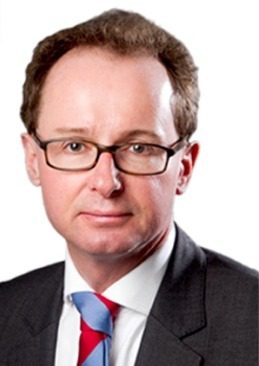

Home A fortnightly look at global financial markets – 15 March 2016


A fortnightly look at global financial markets – 15 March 2016
|
Getting your Trinity Audio player ready... |
The following is a detailed commentary and analysis from deVere Group’s International Investment Strategist, Tom Elliot regarding optimists vs pessimists, the ECB policy continuing to support euro zone equities, energy and mining stocks as a diversifier, and Mr Osborne’s budget.
Q1 asset allocation preferences (unhedged US dollar-based, updated at start of quarter): neutral equities vs. fixed income. Within equities overweight euro zone and Japan, underweight US, UK and emerging markets. Within fixed income, a preference for core government bonds over credit, no duration bias. Longer term outlook is to be pro-risk assets.
Optimists vs pessimists
- The debate persists between those who believe that the global economy is sinking under a weight of debt and deflation, aggravated by central bank policies, and those who believe the unorthodox measures taken by central banks in recent years must eventually stimulate growth and inflation. This debate is reflected in moves in the capital markets, with rallies in core government bond markets occurring when the bears dominated the news until mid-February, followed by a rally in risk assets such as equities as US economic data improved.
- This struggle between the two strands of thought may persist for some time, before the optimists ultimately win. A look at economic history suggests that eventually loose monetary policy will stimulate inflation and demand growth, and a look at financial history over the last 100 years clearly favours the view that you buy risk assets when there is uncertainty as there is today.
ECB policy continues to support euro zone equities
- A bank-led rally in euro zone stock markets over the next few weeks appears likely, following last week’s ECB announcement.
- On Thursday the ECB announced a further cut in the deposit rate (the rate it pays banks to leave their cash with it), down 10bps to -0.4%, and a cut in the repo rate (its key policy rate) to 0%. It also announced an expansion of its monthly asset purchase scheme (ie, quantitative easing), both in the quantity of purchases and the type of bonds it will buy. The list now includes high grade corporate bonds, leading some analysts to anticipate a rush by blue chip companies to issue debt knowing that the ECB will buy it. The ECB also announced the availability of new long term loans to euro zone banks to help beef up their balance sheets, after banks complained in February of the damage that a negative deposit rate is doing to their profitability since they cannot pass it onto to their clients.
- Mr Draghi wanted to demonstrate that the ECB still has a lot of monetary fire power to throw at the euro zone economy in its effort to stimulate growth and inflation. However, in what has been described as a move to placate Germany –always worried about monetary laxity- Draghi stated that the deposit rate is unlikely to fall below -0.4% in the future. This apparent admission that a key tool of monetary easing has its limits undermined the intended impact of the overall announcement, leaving financial markets confused.
- I suspect the -0.4% limit is also about reassuring the region’s banks that the unorthodox negative interest rate policy (NIRP) that the ECB is pursuing will not be allowed to damage the banking system further. This should, therefore, underpin bank share prices that fell badly in late January and early February on fears that NIRP was damaging the very banks that are needed to pass cheap ECB money into new lending.
- A firmer bank sector will reassure the market in general. The gains in euro zone bank share prices since Thursday’s ECB announcement may therefore help drive a rally in euro zone equities, after a disappointing period of underperformance year to date relative to other major stock markets.
Energy and mining stocks as a diversifier
- The recent recovery in mining and oil stocks, and the oil price, since mid-February has been a welcome surprise. It came to a pause last week when China released weaker than expected economic data. As the world’s largest user of many raw materials, any further fears of a hard landing for the Chinese economy risks a renewed plunge in prices which will have a direct impact on the share prices of extractive industries.
- The revival in the sectors’ fortunes highlights the need to maintain a fully diversified portfolio, even including deeply unloved sectors. Since the start of the year, the Bloomberg Commodity Index is up 1.35% since 1stJanuary, as opposed to the MSCI World equity index that is down 1.85% (both in USD).
- Furthermore, over the last 18 months’ radical surgery has been applied to the energy and mining sectors that has helped reduced costs. Non-core assets are being sold, service contracts re-negotiated, and in February we saw some long-overdue dividend cuts from a number of mining companies. While the bear market in commodities may not be over yet, when it is the energy and mining sectors will be rid of the accumulated fat that they gathered during the years of plenty and profitable at much lower commodity price levels than they were five years ago.
Mr Osborne’s forgettable budget
- I expect a forgetful UK budget on Wednesday afternoon. Chancellor George Osborne is hemmed in by a structural problem of low productivity in the UK economy, and the political need of not upsetting the voters ahead of June’s EU referendum. Mr Osborne will announce a host of small things that amount to little in substance.
- On Wednesday Mr Osborne will explain why tax receipts have been weaker than expected, resulting in the need for further cuts in public spending (the FT believes £4 bn worth is needed) and/or tax hikes. With a current budget deficit of 3.6% of GDP, the 10% plus deficit of around 2010 are long gone. However, the UK still has the second highest deficit of the major economies (after Japan at 6%) and exceeds that of EU neighbours such as France, Italy and Belgium. This is despite a program of fiscal austerity going back to 2010, and much stronger GDP growth than most other developed economies in recent years.
- So what has gone wrong? A key feature of the economic revival of recent years has been jobs growth, bringing unemployment down to around 5%, compared to 10.3% in the euro zone. But these have been lower paid than expected, resulting in weaker income tax revenues and weaker consumption and sales taxes (ie, VAT) than had been forecasted. The absence of high-paid jobs is thought to be a reflection of weak productivity growth, which in turn reflects a slow take-up of technology and weakness in vocational training. Not much that the Chancellor can fix quickly.
- But other revenue raising measures can be applied relatively quickly, particularly when the government is still in its first year of office and a general election is four years away –long enough for unpopular measures to be forgotten by the voters. Unfortunately for Mr Osborne, many of his recent ideas have been vetoed by fellow Conservatives as too-dangerous, given the June vote on EU membership. So we have said goodbye to limits on child tax credits and, more recently, to introducing ISA-like pensions that would reduce up-front tax rebates. A possible hike on fuel duty is being lobbied against by his own political party, wary of upsetting ‘middle England’ into voting to leave the EU.
- Mr Osborne wants to succeed Mr Cameron as leader of the Conservative party and Prime Minister. Therefore, he has to ensure that the Remain side of the EU debate wins the referendum, since if it loses he and Mr Cameron will be replaced by leading Conservative politicians who back the Leave side. Therefore, we can expect an utterly forgettable budget.
Related
You May Also Like


Choosing the right school for your Children
The UAE, particularly Dubai and Abu Dhabi, offers a multitude of educational opportunities for children, with a diverse...


A fortnightly look at global financial markets – 25 October 2016
The following is a detailed commentary and analysis from deVere Group’s International Investment Strategist, Tom Elliot regarding: Is...


Family Wealth Manager praises mentoring at Stapleford Park
When Albert Einstein said: “The only source of knowledge is experience” I believe he wasn’t too far away...
DISCLOSURE:
mikecoady.com, the website, does not provide financial, investment or tax advice. It is specially designed to provide its users with general information. It does not give individual or specific advice on which products or services are the most appropriate for an individual’s particular circumstances. We may from time to time publish content on this site that has been created by affiliated or unaffiliated contributors.




